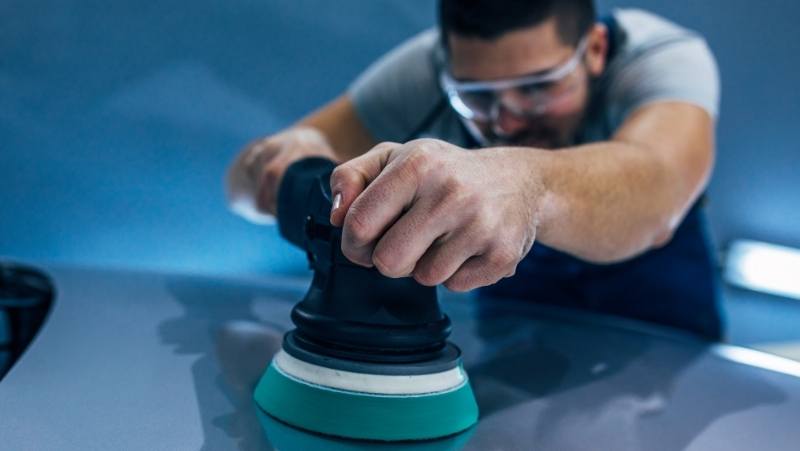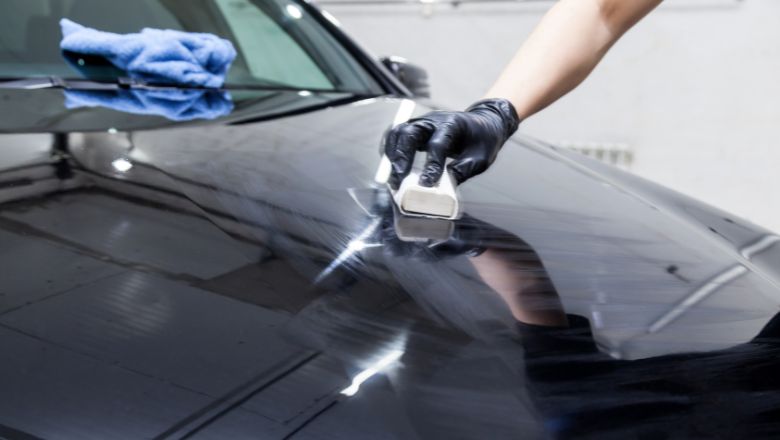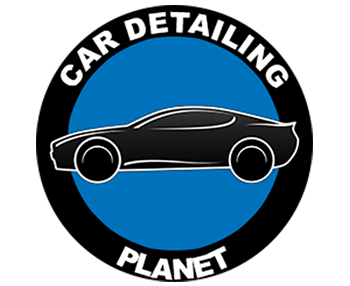Okay, you’ve finally done a clay bar treatment on your vehicle, and now it’s completely free of any contaminants.
What are the next steps?
Some people prefer to finish here, while others decide to polish the car as a final step. In this post, I’ll show you whether it’s important or not, according to my experience and research.
Key Takeaways
- Polishing after the clay bar is not necessary if the paint is in good condition.
- Polishing is always recommended after doing a clay bar treatment on your vehicle.
- If the car paint has swirl marks, scratches, and marring – polishing is needed.
- If you don’t want to polish a car after clay bar treatment, you can use glazes to hide those paint imperfections.
Polishing Car After Clay Bar Is Not a Must, But It’s Recommended

Polishing your car after you’ve done the clay bar treatment is not a must and isn’t necessary, but it is highly recommended. If you ask any auto detailer if they suggest you polish the car after doing clay bar treatment, they’ll say “Yes”!
In my experience, the only time I skip polishing is when the car has minimal contamination that can be safely removed with fine clay bars, which don’t leave any marring behind.
But whenever I use medium or heavy-duty clay bars, I polish the car afterward.
Reasons Why You Should Polish a Car After Clay Bar
Here are some of the most important reasons why I suggest that you polish a car after doing a clay bar treatment.
1. Clay Bar May Cause Marring On The Paint
There are three main types of clay bars, and some of them may cause marring on the paint, which can be removed by polishing your vehicle.
Types of clay bars:
- Fine – used for very light decontamination
- Medium – a great all-around clay bar for most cars
- Heavy-duty – for older cars that have very contaminated paint
Clay bars are abrasives, and that’s why they’re so successful at removing paint decontamination.
If you’re doing everything correctly, fine clay bars shouldn’t scratch the clear coat or cause marrings. On the other hand, if you’re using a medium or a heavy-duty clay bar, it could cause some very light scratches or marring, so, in that case, you’ll have to polish your car after claying.
2. Polishing Prepares The Car For Paint Protection

Clay bar treatment removes all the sealants and waxes from your car, and they also loosen ceramic coatings, meaning that you’ll have to reapply any paint protection that you had prior to clay bar treatment.
Polishing is extremely important if you want paint protectants to bond to the paint perfectly so that they can last longer. That’s especially true for ceramic coatings.
3. Not All Clear Coats Are The Same In Terms of Hardiness
Not all clear coats on cars have the same level of hardness. Japanese cars, for instance, have a much softer clear coat when compared to German cars. Also, all luxurious car clear coats have extremely high levels of hardiness.

A harder clear coat isn’t that easy to scratch, meaning that you may not cause any marrings while claying the car.
But if you do clay bar treatment on some Asian cars, expect to see more marring on the paint because of the soft clear coat they use for cars.
What Type of Polish To Use After Clay Bar Treatment
Since clay bar treatment won’t actually scratch the clear coat but will make just tiny marring and imperfections, you don’t have to use harsh compounds to get rid of those imperfections.
After clay bar treatment, you should use a finishing polish, which is used to bring back paint shine and fix even the tiniest paint imperfections.
I recommend using Menzerna Super Finish Plus 3800. I had the best experiences with it, and it brings back the paint’s shine much better than some other similar polishes.
You Can Use Glazes To Hide Marring Caused by Clay Bar
If you still don’t want to polish your car after doing a clay bar treatment, there’s one other option that you can opt for – applying glaze to your vehicle.
Glazes are usually used to hide the tiniest paint imperfections and make the car look shinier. Glazes contain tiny fillers that will cover all the paint defects and make the clear coat as smooth as possible.
While it’s not the ultimate solution, it’s a pretty simple and quick fix if you don’t want to polish a car.
However, do note that glazes don’t last long and that you should apply waxes or sealants on top of them to increase their longevity.
How To Minimize The Level of Marring Caused by Clay Bars
You should always follow the proper guidelines to minimize the level of marring caused by clay bar treatment.
Tips to reduce the chances of clay bars causing paint defects:
- Always do chemical decontamination first by using an iron remover.
- Start with the least abrasive (fine) clay bar first.
- Use high-quality clay bar lubricants so the clay bar glides smoothly.
- Only work in straight-line motions with a clay bar.
- Fold the clay bar after you decontaminate each car panel.
- If you drop a clay bar on the floor, don’t use it anymore. Pick a new one.
By following those guidelines, the chances of damaging the paint with a clay bar are much lower.
Bottom Line
As you can see, while polishing isn’t necessary after doing a clay bar treatment, I highly suggest that you do it if you want the best possible result.
You can even polish the car by hand, which is great for people who still didn’t get a chance to buy a car polisher.

